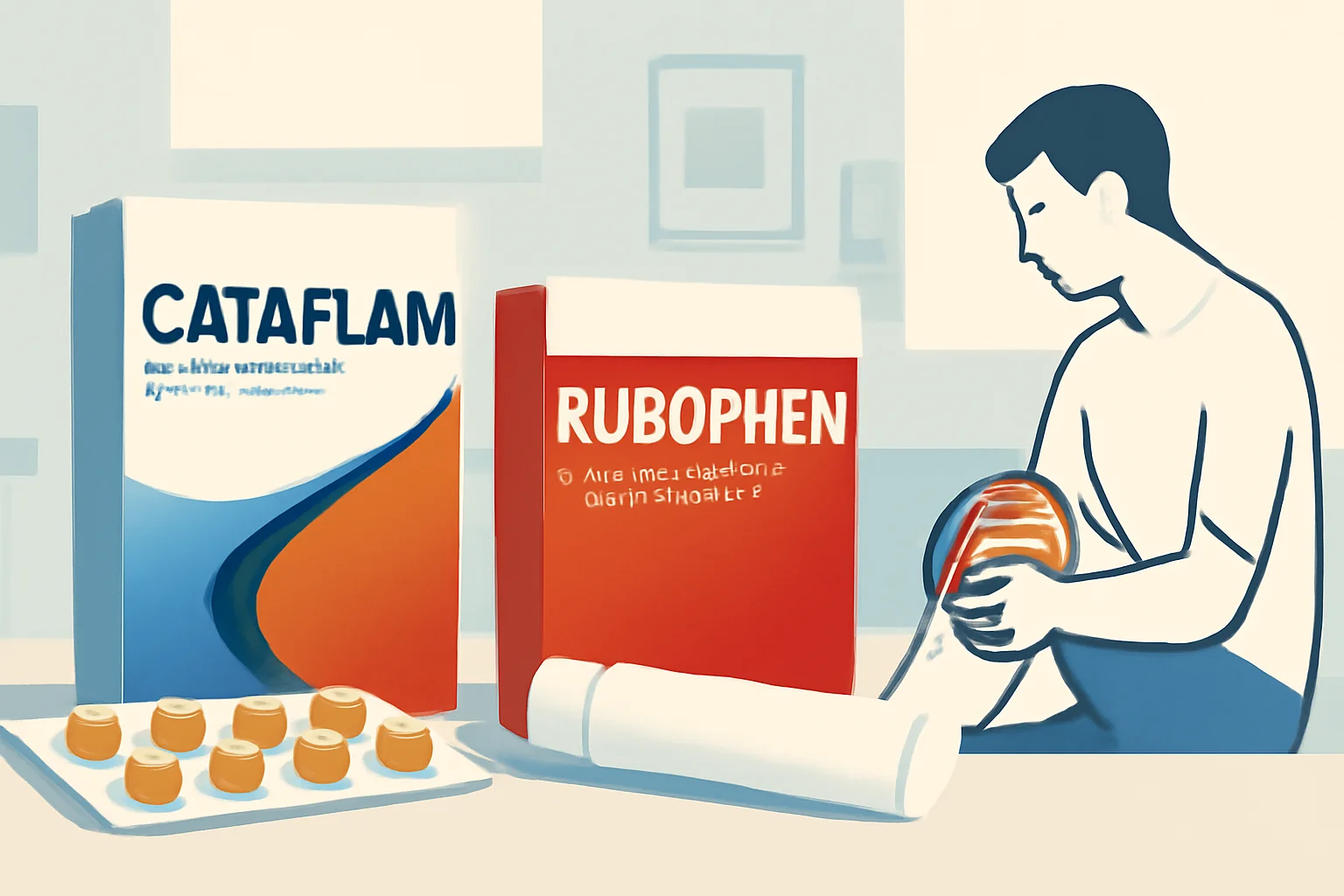
Cataflam or Rubophen: Which is the Better Painkiller?
The range of painkillers available is wide, and many people encounter them in everyday life. Cataflam and Rubophen are two popular medications that have different active ingredients and areas of application. In addition to pain relief, their anti-inflammatory properties also play a significant role, which is why they are often sought after. People often do not know when it is advisable to choose one over the other and what side effects they might expect. The use of painkillers not only serves to improve physical comfort but also to facilitate the performance of daily activities.
Cataflam: Effectiveness and Areas of Application
Cataflam contains the active ingredient diclofenac, which is a non-steroidal anti-inflammatory drug (NSAID). The mechanism of action of this medication is based on the inhibition of the production of prostaglandins, which are the main mediators of inflammation and pain. Cataflam is particularly effective in treating pain associated with inflammatory processes, such as arthritis, rheumatic pain, and postoperative pain.
The medication is quickly absorbed, and its effects can be felt relatively soon, making it suitable for urgent pain relief. Cataflam not only reduces pain but also moderates the degree of inflammation, which is why doctors often recommend it after sports or accident injuries.
It is important to mention that Cataflam is not without side effects. The most common include gastrointestinal irritation, such as nausea, stomach pain, or diarrhea. Long-term use also requires monitoring of liver and kidney functions, as these organs may be sensitive to diclofenac. For those who are sensitive to non-steroidal anti-inflammatory drugs, the use of Cataflam is contraindicated, and medical consultation is necessary.
Overall, Cataflam can be an effective choice for inflammatory pain, but it is always advisable to consult a doctor before use to avoid potential side effects and unwanted interactions with other medications.
Rubophen: Mechanism of Action and Benefits
The active ingredient in Rubophen is paracetamol, which is a widely used pain reliever and fever reducer. The mechanism of action of paracetamol differs from that of non-steroidal anti-inflammatory drugs, as it does not affect inflammatory processes but inhibits pain perception in the central nervous system. Therefore, Rubophen is particularly useful for treating mild to moderate pain, such as headaches, toothaches, and fever.
The advantage of Rubophen is that it is generally well tolerated and rarely causes gastrointestinal side effects, which can be especially important for those sensitive to anti-inflammatory drugs. Additionally, Rubophen does not affect inflammatory processes, so it does not replace anti-inflammatory medications when they are necessary.
One drawback of paracetamol is that it can cause severe liver damage in case of overdose, so it is important to strictly adhere to the recommended dosage. Those suffering from liver disease or consuming alcohol should use this medication with increased caution.
Rubophen can therefore be a safe and effective pain reliever, particularly useful when anti-inflammatory treatment is not essential. Doctors often recommend the use of Rubophen, especially for children and pregnant women, as paracetamol is one of the most researched and well-tolerated pain relief medications.
How to Choose Between Cataflam and Rubophen?
When choosing between Cataflam and Rubophen, it is important to consider the type and intensity of the pain, as well as personal health status. If the pain is of inflammatory origin, such as arthritis or sports injuries, Cataflam may be the appropriate choice, as its anti-inflammatory effect specifically addresses the problem.
On the other hand, if the pain is milder, such as in the case of headaches or fever, Rubophen, due to its active ingredient paracetamol, is likely a more effective and safer choice. Since Rubophen is generally well tolerated, many choose this medication if they do not want to deal with the potential side effects of anti-inflammatory drugs.
Another important consideration is existing health issues. The use of Cataflam is not recommended for individuals with stomach or intestinal diseases, or if the patient is sensitive to non-steroidal anti-inflammatory drugs. In contrast, the use of Rubophen carries a lower risk, but it is still important to adhere to the proper dosing, especially in cases of liver disease.
Medical consultation is recommended for the use of both medications, especially if other medications are also being taken, as drug interactions can have serious consequences. Before starting pain treatment, it is definitely worth seeking a professional’s opinion to select the most appropriate medication.
**Warning:** This article does not constitute medical advice. In case of health issues, always consult your doctor and follow professional advice.

